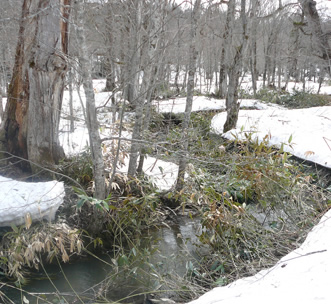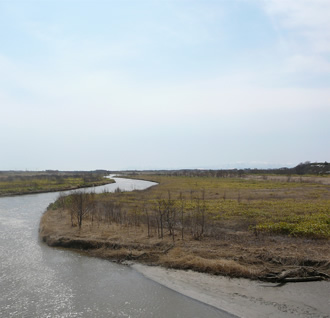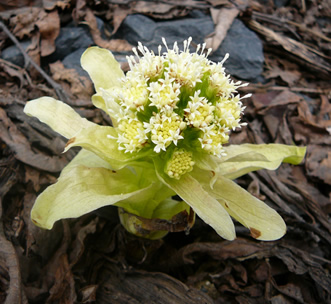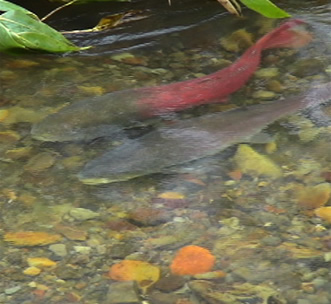Sarufutsu Town is located 30-40 km south from Cape Soya, Japan’s northernmost point in Wakkanai city, on the side of the Okhotsk Sea. It comprises a mosaic of lagoons, wetlands, and rivers in the vast wilderness of Sarufutsu and visitors are greeted with its intact nature. There are 6 rivers running through the Sarufutsu wilderness including the Sarufutsu River with their headstreams flowing from Soya Hills. They run gently and windingly into the Sea of Okhotsk due to their small elevation gains up to their upper reaches. Four in those six rivers ――the Sarufutsu River, the Chiraibetsu River, the Sarusuberi River, and the Onishibetsu River――support the populations of Itou (sea-run taimen).
The Sarufutsu River is inhabited by the largest number of sea-run taimen in Hokkaido and one of the few rivers supporting a stable taimen population. The river slowly flows through wetlands and there is almost no visibility in deep water in its lower reaches. With its grandeur and dynamic flow, this spectacular river is definitely the perfect habitat for Itou, the “Phantom Fish.” Most lagoons in this river system including Poro-numa are connected to the Sarufutsu River and are also habitats for sea-run taimen.


Sarufutsu is characterized by its low elevation gain between inland and coastal areas and the Sarufutsu River has a low water velocity, which is not suitable for and does not necessitate the construction of dams and other large-sized structures. This allows the river basin to remain intact to date including wetlands and lagoons with a wide variety of flora and fauna. However, since the weather condition in Sarufutsu is severe for forests, excessive logging will result in a lot of time and efforts required to regenerate trees. Therefore, large-scale logging has not been conducted for over 30 years within the Oji company forest except for thinning and selective cutting. In addition, Oji Paper Co., Ltd. acquired forest certification and has been managing its company forest in consideration of biological diversity, which is also one of the reasons why a rich natural environment still remains in Sarufutsu.


There are a few reasons why the population of sea-run taimen in the Sarufutsu River has hardly decreased nearly for the past 20 years. Firstly, most of the Sarufutsu River basin is covered with forests. Especially in its upper reaches where taimen spawn, riparian forests with large-sized trees still remain intact, maintaining a favorable spawning and rearing environment for taimen. Secondly, its middle to lower reaches gently meander through wetlands and wildernesses suitable for sea-run taimen to live. Fewer obstructive structures in the river are also an eminent feature compared with other river systems. Thirdly, the river connects with some lagoons inhabited by small fish such as Poro-numa and Mokeuni-numa at the lower reaches, providing feeding places and shelter from floods for taimen. It is essential for us to maintain this environment as it is for conserving sea-run taimen.
